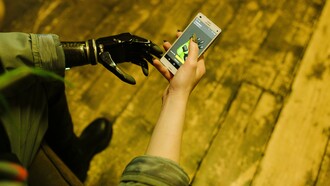Wednesday is green and smells like forest: this may seem nonsensical to most readers. However, for those to whom it makes sense, it might not even feel unusual. And yet, it is. If you are able to, for instance, instantly tell what color the day of the week is, then you are a synesthete.
Based on the research, synesthesia is a phenomenon in which the stimulation of one sensory modality triggers an involuntary response in another, despite there being no obvious connection between the two. Please note that these reactions are involuntary, automatic, and consistent. This means that if you need to think for a long time about a particular association, it is unlikely that you have synesthesia.
Though this condition is rare, present only in 2–4% of the population, it is not a mental deviation. Moreover, there’s some evidence that the same phenomenon naturally occurs and functions during everybody’s early childhood, but then it fades for most people. So, don’t worry if, for example, a guitar sounds orange to you.
So far, this article has provided examples related to visual perception of color, but it’s important to note that there are at least 54 types of synesthesia. Perhaps, the number exceeds a hundred of different types, each of which can be experienced in varying degrees of intensity. What’s more, it happens that a person is endowed with several types of synesthesia at once. I suggest taking a closer look at some of them.
Grapheme-color synesthesia
As you might have guessed, grapheme-color synesthesia is considered one of the most common types of synesthesia. It involves a link between a written letter, number, or symbol and a specific color, in a way that the number 5 might look red and the letter B could appear blue. Often, people with grapheme-color synesthesia report that it helps them memorize study materials, such as the multiplication table.
Day-/month-color synesthesia
“What color is your Wednesday?” asked Bernadette Sheridan in her post on Medium. As she is right to notice, you have the given type of synesthesia when days or months are tinged with colors. Your Wednesday might be yellow (popular answer) or dark blue; my Wednesday is green.
Spatial sequence synesthesia
Spatial sequence synesthesia involves the visualization of certain sequences as arranged in physical space, such as in a zigzag line or different shapes. Synesthetes often perceive mental images when thinking of letters, numbers, and, most commonly, time units.
Time-space synesthesia
While your calendar may be colored in 12 different colors, individuals with time-space synesthesia experience an even more vivid phenomenon, though often intertwined with color perception as well. They perceive time units, such as weekdays, months, years, or digits, as physically arranged in spatial patterns around or in front of them. For example, a person with this type of synesthesia might see the days of the week forming a circle, a ribbon, or even a spiral stretching outward. The months of the year might appear as a 3D arc or a loop that shifts in their mental field of vision as they think about different times.
Spatial sequences of concepts
While time units, letters, and numbers are commonly associated with spatial sequence synesthesia, some individuals experience this phenomenon with other concepts, such as zodiac signs, school subjects, TV shows, and even people. A person with this type of synesthesia forms mental sequence maps, arranging visual layouts within a perceived physical space.
Auditory-visual synesthesia
In this form of synesthesia, often referred to as sound-to-color synesthesia, specific sounds can involuntarily trigger the perception of vibrant color spots, stripes, or waves, creating a visual experience for the listener while engaging with music, speeches, signals, or other auditory inputs. These colors are consistent and unique to each synesthete, meaning that a particular note or sound will always evoke the same color for them. For instance, a high-pitched violin note might appear as a golden streak, while a deep bass drum could evoke ripples of deep blue.
Auditory-tactile synesthesia
For individuals with auditory-tactile synesthesia, certain sounds can evoke specific tactile feelings on their skin or within their bodies, such as the sensation of tingling on the fingertips or even pain in the chest.
Mirror touch synesthesia
Mirror-touch synesthesia is a rare type of synesthesia in which individuals literally feel the same sensations another person experiences. For example, if they observe someone touching another person's hand, they involuntarily feel as though their own hand is being touched. In some cases, they may even experience pain upon seeing someone else get injured.
Gustatory-visual synesthesia
Also called flavour-to-vision synesthesia, where individuals visualize abstract shapes, textures, and colors in response to tasting food.
Lexical-gustatory synesthesia
This type is also one of the uncommon ones and can be described as the ability of a person to taste words. Hearing or even thinking about a word can evoke specific flavour perceptions, either as a real sensation in the mouth or a strong association, automatically induced. For example, somebody’s name might taste like a strawberry, or the word “soccer” might bring the flavor of lemon.
Lexical-olfactory synesthesia
By the analogy, lexical-olfactory synesthesia is the form of synesthesia in which words trigger a specific smell. The phenomenon of synesthesia often sparks discussions on platforms like Reddit, where people with this condition share their experiences and explore the distinct, sometimes surprising, connections between language and scent. One user admits that the word “fortunate” smells like cheese.
Did you recognize yourself in any of these descriptions? This is just a glimpse into the many fascinating forms of synesthesia that have been documented. Countless others remain unstudied due to their rarity and the deeply personal nature of the experience.
Synesthesia has inspired countless artists, musicians, and writers to create unique works inspired by their perception of the world. From painter Wassily Kandinsky, who visualized music as vibrant colors and shapes, to composer Olivier Messiaen, who saw music as hues and shades, synesthesia has been a powerful creative force. Modern artists, such as Billie Eilish, continue to use their unique sensory experiences that still remain a mystery to people without synesthesia.
Whether you experience synesthesia yourself or are simply intrigued by its mysteries, it’s clear that this phenomenon blurs the boundaries of perception and challenges our understanding of the human mind.















